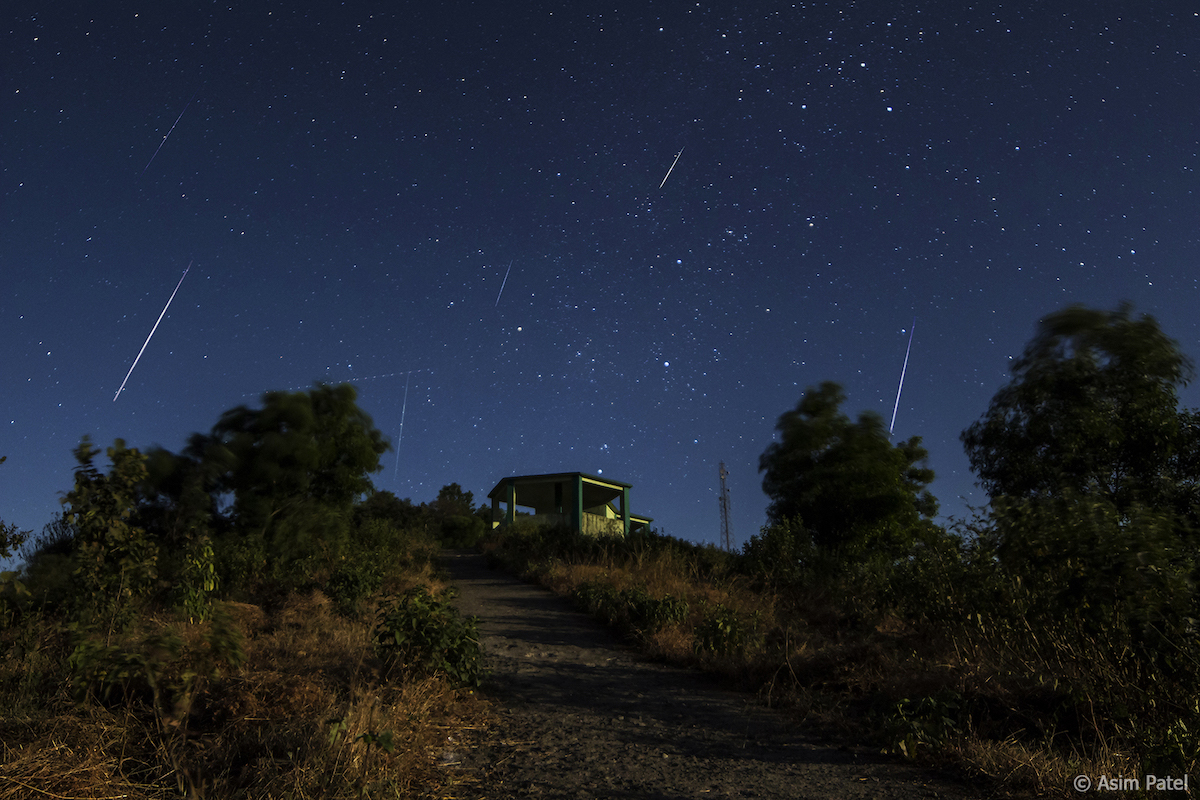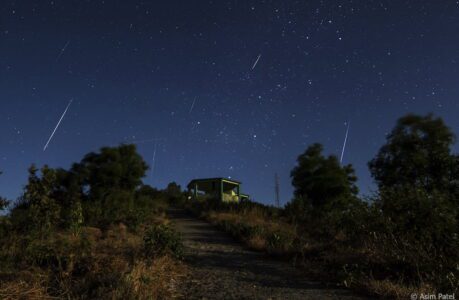The Geminids meteor shower is an annual astronomical event that takes place every December, typically peaking around December 13th to 14th. It is one of the most impressive meteor showers of the year, producing an incredible display of shooting stars that can be seen from all over the world.
The Geminids meteor shower gets its name from the constellation Gemini, where the meteors appear to originate from in the night sky. The meteor shower is caused by the debris left behind by the asteroid 3200 Phaethon, which is thought to be an extinct comet.
During the peak of the Geminids meteor shower, you can see dozens of meteors per hour, making it a truly breathtaking sight. The meteors are often bright and colourful, with some leaving long trails across the sky. The Geminids are known for producing some of the brightest and most beautiful shooting stars of any meteor shower.
To see the Geminids meteor shower, you’ll need to find a dark location away from city lights. Look towards the constellation Gemini in the eastern sky after dark, and you should be able to spot shooting stars radiating from that area of the sky. The peak of the meteor shower usually lasts for a few hours, so plan to spend some time outside to catch as many shooting stars as possible.
The best time to view the Geminids meteor shower is typically after midnight, when the constellation Gemini is higher in the sky. However, you may be able to spot shooting stars earlier in the evening as well. The Geminids meteor shower is visible from both hemispheres, so everyone has the opportunity to witness this awe-inspiring natural spectacle.
What causes the Geminids Meteor Shower
The Geminids meteor shower is caused by debris left behind by an asteroid known as 3200 Phaethon. This asteroid is believed to be a former comet that lost its volatile materials, leaving behind a rocky and dusty debris field in its orbit. As Earth passes through this debris field, the tiny fragments of dust and rock collide with our atmosphere at high speeds, producing the spectacular shooting stars that we see in the sky during the Geminids meteor shower. The name of the meteor shower comes from the fact that the meteors appear to radiate from the direction of the constellation Gemini, although the actual point of origin is the debris field left by 3200 Phaethon.
Where can I see Geminids Meteor Shower
The Geminids meteor shower can be seen from many parts of the world, although the visibility and intensity of the meteor shower can vary depending on your location and local weather conditions. To see the Geminids meteor shower, you will need to find a location with minimal light pollution and a clear view of the night sky.
Ideally, you should try to get away from urban areas and find a dark, open area that offers an unobstructed view of the horizon. National parks, rural areas, and high-altitude locations can be great places to view meteor showers.
The Geminids meteor shower is visible from both the Northern and Southern Hemispheres, so anyone in the world can potentially see it. However, the peak viewing time for the Geminids is usually in the northern hemisphere in December, when the radiant point (the point in the sky from which the meteors appear to radiate) is highest in the sky.
If you’re in the northern hemisphere, look towards the constellation Gemini, which is where the radiant point is located. The best time to view the Geminids is typically after midnight when Gemini is high in the sky.
In summary, the Geminids meteor shower can be seen from many parts of the world, but the visibility and intensity of the meteor shower can depend on your location and local weather conditions. To see the Geminids, find a location with minimal light pollution and a clear view of the night sky and look towards the constellation Gemini after midnight during the peak viewing time in December.
Gemini
Gemini is one of the constellations in the night sky, and it is one of the most recognizable and prominent constellations in the northern hemisphere. It is located near the celestial equator and is visible from most parts of the world.
Gemini is often referred to as “The Twins” because the two brightest stars in the constellation, Castor and Pollux, are close together and appear to be twins. The constellation is also known for its bright stars and notable deep-sky objects, including the star cluster M35 and the supernova remnant known as IC 443.
In addition to its astronomical significance, Gemini has also played a role in mythology and astrology throughout history. In Greek mythology, the constellation represents the twin brothers Castor and Pollux, who were known as skilled warriors and sailors. In astrology, Gemini is one of the twelve zodiac signs, and people born under this sign are said to be adaptable, communicative, and intellectual.
During the Geminids meteor shower, the radiant point (the point in the sky from which the meteors appear to radiate) is located near the constellation Gemini, which is why the meteor shower is named after this constellation. Observers can see the shooting stars radiating from this point in the sky, adding to the beauty and intrigue of the constellation.
What are meteors
Meteors, also known as shooting stars or falling stars, are streaks of light that are produced when a small piece of debris from space, such as a meteoroid or a comet, enters the Earth’s atmosphere and burns up due to friction with the air.
Meteors can vary in size, from tiny specks of dust to larger objects several metres in diameter. When a meteor enters the atmosphere, it can reach speeds of up to 70 kilometres per second (157,000 miles per hour), causing the air in front of it to compress and heat up, which produces a streak of light that we see as a shooting star.
Most meteors burn up completely in the atmosphere, leaving no trace behind. However, larger objects can sometimes survive the descent and reach the ground as meteorites.
Meteors are common occurrences in the night sky and can be seen on any clear night, although they are more frequent during meteor showers, which occur when the Earth passes through a stream of debris left behind by a comet or asteroid. During meteor showers, the number of meteors visible in the sky can increase significantly, making for a spectacular celestial display.
In conclusion, the Geminids meteor shower is a must-see event for anyone interested in astronomy or just looking to experience the beauty of the night sky. With dozens of shooting stars per hour, bright and colourful meteors, and a stunning display radiating from the constellation Gemini, the Geminids meteor shower is an unforgettable experience that everyone should witness at least once in their lifetime.

